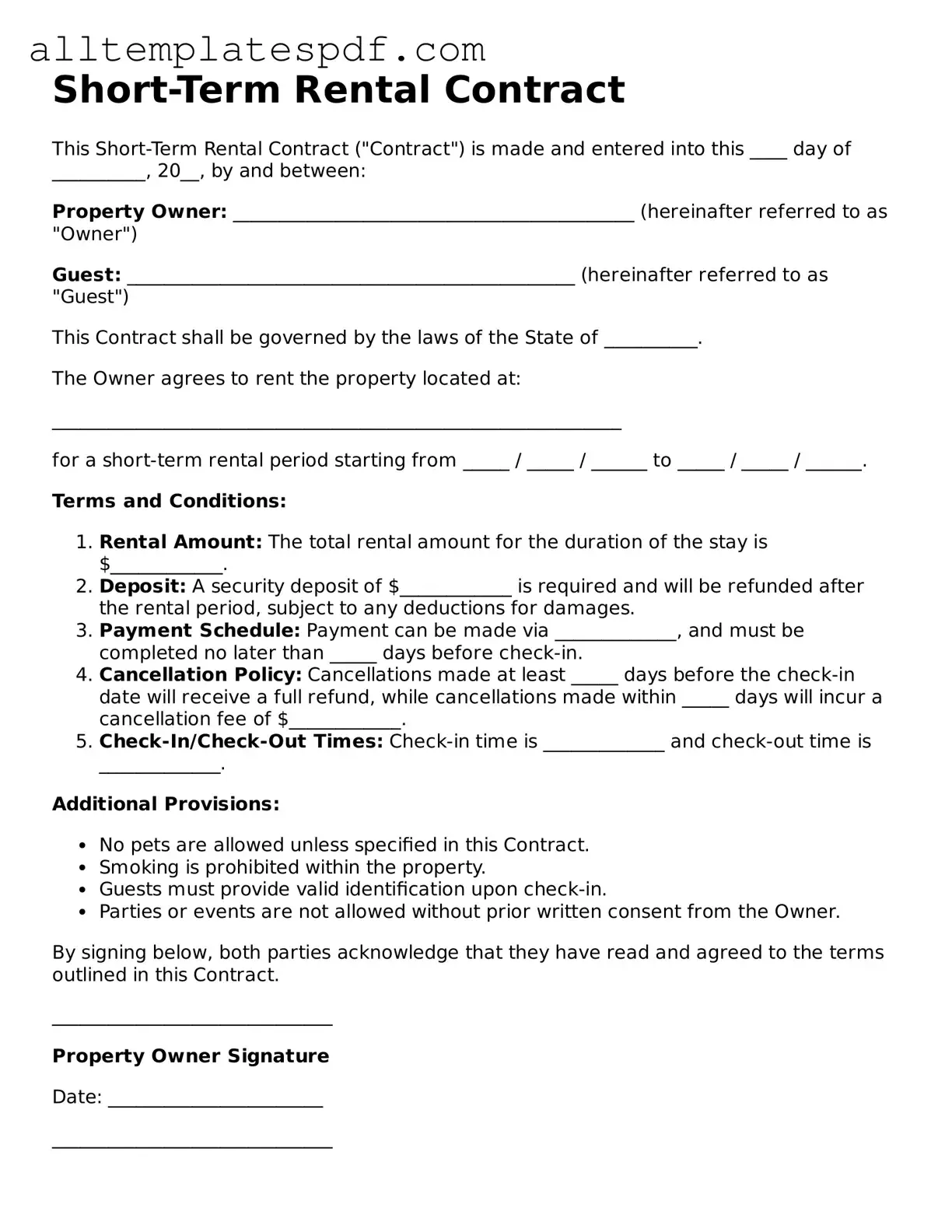Filling out a Short-Term Rental Contract form can be a straightforward process, but many people make common mistakes that can lead to misunderstandings or disputes. One frequent error is failing to include all necessary personal information. Renters should ensure that their full name, contact details, and any other required identification are clearly stated. Omitting this information can create confusion and complicate communication.
Another mistake involves overlooking the rental dates. Clearly specifying the start and end dates of the rental period is crucial. Many individuals either forget to include these dates or write them incorrectly, which can result in unintended consequences, such as double bookings or misunderstandings about the duration of the stay.
People often neglect to read the terms and conditions of the contract thoroughly. This oversight can lead to accepting clauses that may not be favorable. For instance, there may be specific rules about pets, noise levels, or the use of common areas. Understanding these terms helps ensure that both parties have aligned expectations.
Inaccurate payment details are another common pitfall. Renters should double-check the payment amount, method, and due dates. Mistakes in this section can lead to disputes over financial obligations. Clear communication about fees, deposits, and any additional charges is essential for a smooth transaction.
Many individuals fail to clarify the cancellation policy. This aspect of the contract can significantly impact a renter's plans. Understanding the penalties or conditions for cancellation can save time and money. It is advisable to ensure that this information is explicitly stated and understood by both parties.
Finally, not obtaining signatures from all parties involved can render the contract invalid. A contract is only enforceable when it is signed by both the landlord and the renter. Without these signatures, the agreement may not hold up in a legal context, leaving one party vulnerable. Ensuring that all necessary signatures are collected is a critical step in the process.
